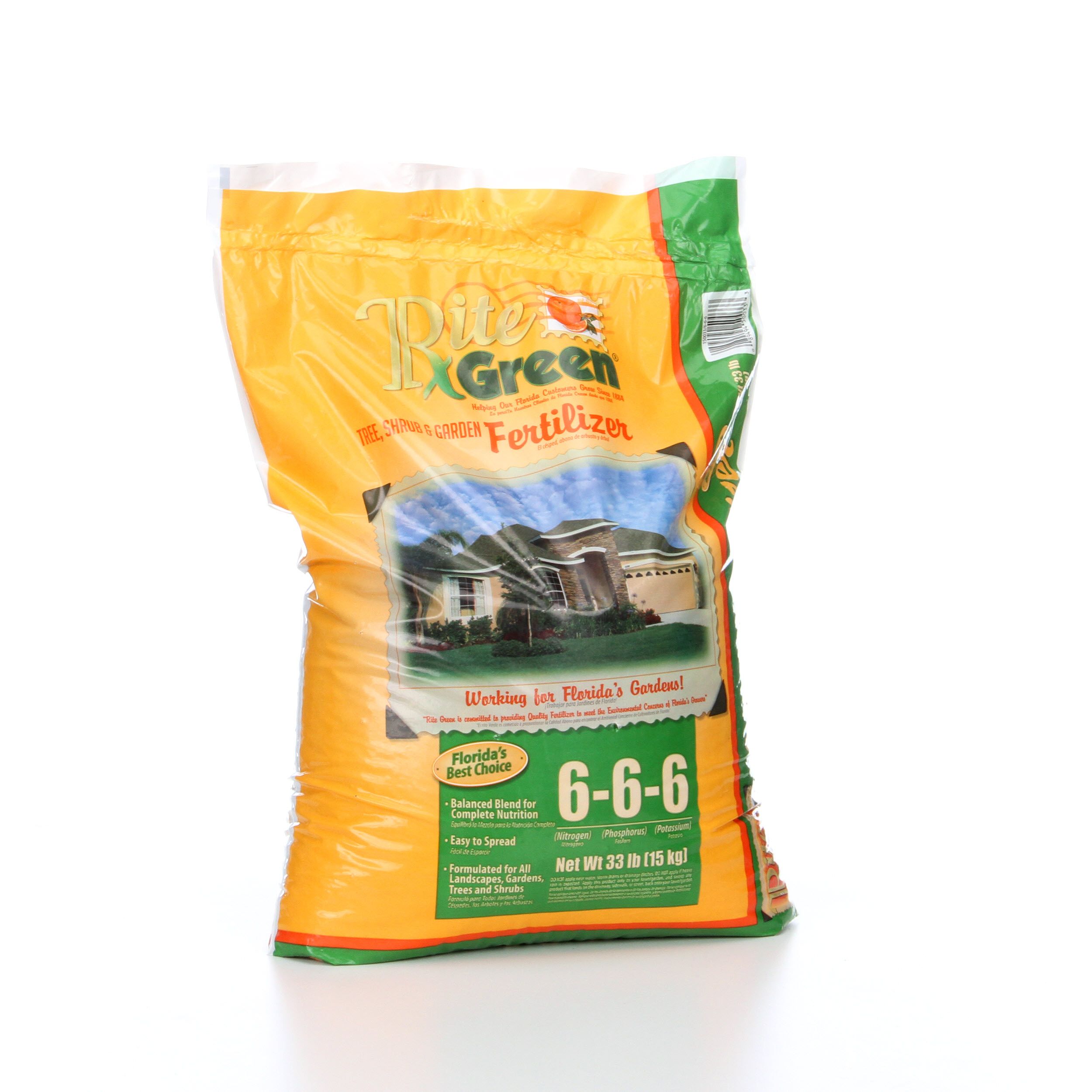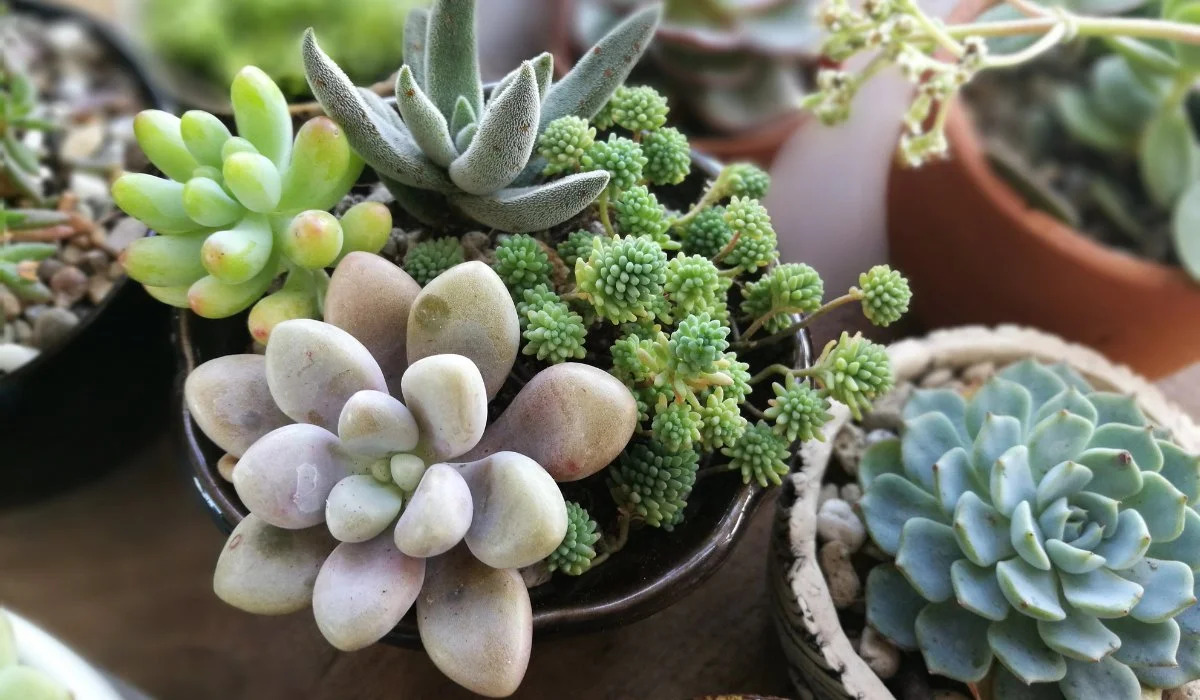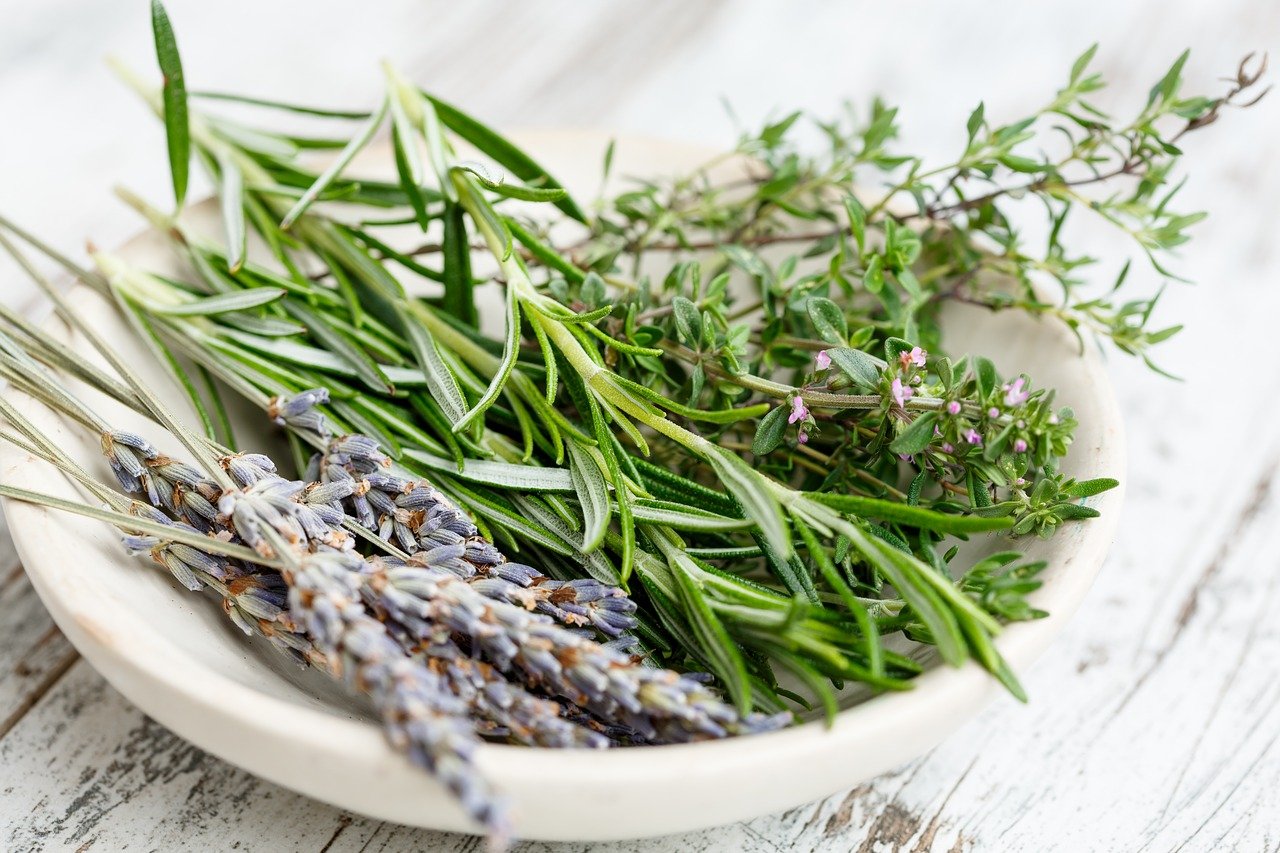Home>Types of Gardening>Edible Gardening>What Is 6-6-6 Fertilizer Good For


Edible Gardening
What Is 6-6-6 Fertilizer Good For
Modified: January 22, 2024
Discover the benefits of using 6-6-6 fertilizer for edible gardening. Enhance the growth and productivity of your edible plants with this nutrient-rich fertilizer.
(Many of the links in this article redirect to a specific reviewed product. Your purchase of these products through affiliate links helps to generate commission for Chicagolandgardening.com, at no extra cost. Learn more)
Table of Contents
Introduction
Welcome to the world of edible gardening! Whether you have a sprawling backyard or a small balcony, growing your own food is a rewarding and sustainable way to embrace nature and nurture your taste buds. And when it comes to thriving edible plants, using the right fertilizer is crucial.
One popular fertilizer choice for edible gardens is 6-6-6 fertilizer. But what exactly is it, and what makes it a great option for your plants? In this article, we’ll explore the ins and outs of 6-6-6 fertilizer, its nutrient composition, advantages, suitable plants, application methods, and potential risks. So, let’s dig deep and uncover the secrets behind this nutrient powerhouse!
Whether you’re a seasoned gardener or just starting out, understanding the role of fertilizers in plant growth is key. Fertilizers provide essential nutrients that plants need to thrive, promoting healthy foliage, robust root systems, and fruitful harvests. While there are various types of fertilizers available, each with its own nutrient ratios, 6-6-6 fertilizer has gained popularity for its balanced composition.
So, why opt for 6-6-6 fertilizer? Well, it’s all about striking the right balance. The numbers 6-6-6 refer to the percentage of three key elements: nitrogen (N), phosphorus (P), and potassium (K). These are the primary nutrients plants need in different quantities to support various growth stages. The balanced ratio of 6-6-6 ensures that all three elements are present in equal amounts, providing a well-rounded boost to your plants.
What is 6-6-6 Fertilizer?
6-6-6 fertilizer, also known as balanced fertilizer, is a type of fertilizer that contains equal levels of three essential nutrients: nitrogen (N), phosphorus (P), and potassium (K). These nutrients are often referred to as NPK and play vital roles in plant growth and development.
The first number in the 6-6-6 ratio represents the percentage of nitrogen. Nitrogen is responsible for promoting healthy leaf and stem growth in plants. It is a crucial nutrient that helps in the synthesis of chlorophyll, which is essential for photosynthesis. Adequate nitrogen levels in the soil stimulate lush, green foliage and encourage vigorous plant growth.
The second number in the 6-6-6 ratio represents the percentage of phosphorus. Phosphorus is necessary for strong root development, flower formation, and fruit production. It aids in the transfer of energy within the plant and plays a vital role in DNA and RNA synthesis. Plants supplied with sufficient phosphorus have robust root systems, improved flowering, and higher yields.
The third number in the 6-6-6 ratio represents the percentage of potassium. Potassium, also known as potash, is essential for overall plant health and vigor. It helps regulate water movement, improve disease resistance, and enhance the plant’s ability to withstand environmental stresses like drought and extreme temperatures. Potassium also aids in fruit and seed development, making it crucial for edible gardeners.
By providing an equal amount of nitrogen, phosphorus, and potassium, 6-6-6 fertilizer ensures a balanced nutrient supply for your plants. This balanced ratio helps avoid excessive nutrient imbalances that can lead to nutrient deficiencies or toxicities. It offers a harmonious blend of nutrients to support overall plant growth, root development, and abundant yields.
Nutrient Composition of 6-6-6 Fertilizer
The nutrient composition of 6-6-6 fertilizer, as indicated by its NPK ratio, provides an equal distribution of nitrogen (N), phosphorus (P), and potassium (K). Each of these nutrients plays a crucial role in plant growth and development, and their balance is essential for optimal results in your garden.
Nitrogen, the first nutrient in the ratio, is responsible for promoting lush foliage and healthy plant growth. It is essential for the production of chlorophyll, the pigment responsible for capturing sunlight and initiating photosynthesis. Nitrogen also plays a role in protein synthesis and overall plant metabolism. With a balanced 6-6-6 fertilizer, your plants receive a sufficient nitrogen supply, facilitating vibrant and vigorous growth.
Phosphorus, the second nutrient in the ratio, is essential for the development of strong roots, flowers, and fruits in plants. It aids in energy transfer and is crucial for processes like DNA and RNA synthesis. Proper phosphorus levels in the soil promote robust root systems, which enhance nutrient uptake and plant stability. Additionally, phosphorus supports flower formation and improves the quality and quantity of fruits produced by your plants.
Potassium, the third nutrient in the ratio, is vital for overall plant health and resilience. It regulates water movement within the plant, helping to maintain proper hydration and nutrient distribution. Potassium also contributes to disease resistance, enabling plants to better withstand environmental stresses like drought, temperature extremes, and pathogens. Additionally, potassium plays a role in the synthesis of sugars and starches, which provide energy for growth and fruit development.
By utilizing 6-6-6 fertilizer in your garden, you are providing your plants with a well-balanced blend of nutrients. This balanced composition ensures that your plants receive an equal and adequate supply of nitrogen, phosphorus, and potassium. The nutrient ratios in 6-6-6 fertilizer support overall plant health, encourage robust growth, and enhance flower and fruit production.
Advantages of Using 6-6-6 Fertilizer
Using 6-6-6 fertilizer in your edible garden comes with several notable advantages. From promoting balanced growth to improving plant health, this fertilizer can help you achieve impressive results. Let’s explore the advantages of using 6-6-6 fertilizer and why it’s a popular choice among gardeners.
1. Balanced Nutrient Supply: The balanced composition of 6-6-6 fertilizer ensures that your plants receive an equal distribution of nitrogen, phosphorus, and potassium. This balance promotes overall plant health and supports balanced growth, helping to prevent nutrient deficiencies or toxicities.
2. Versatility: 6-6-6 fertilizer can be used on a wide range of plants, making it a versatile option for your garden. It is suitable for both flowering and fruiting plants, vegetables, herbs, and ornamental plants. Whether you have a diverse edible garden or a mix of ornamentals, 6-6-6 fertilizer can provide the necessary nutrients for all your plants.
3. Root Development: The phosphorus content in 6-6-6 fertilizer promotes strong root development, which is vital for the long-term health and productivity of your plants. Robust root systems improve nutrient and water absorption, leading to healthier plants and increased resistance to drought and environmental stresses.
4. Flower and Fruit Production: With its balanced nutrient ratio, 6-6-6 fertilizer supports abundant flower and fruit production in your edible garden. Adequate potassium levels contribute to improved flower formation, while phosphorus enhances the quality and quantity of fruits. The result is a bountiful harvest of vibrant blooms and delicious, healthy produce.
5. Overall Plant Health: The well-rounded nutrient supply of 6-6-6 fertilizer boosts overall plant health and enhances plant vigor. Proper nutrition improves disease resistance, helping plants ward off pests and pathogens. Additionally, the balanced nutrient levels promote optimal photosynthesis, leading to lush foliage and healthy growth.
6. Convenient Application: 6-6-6 fertilizer is widely available in various forms, such as granules, pellets, or liquid formulations. This makes it easy to apply and incorporate into your garden routine. Follow the manufacturer’s instructions for the specific type of fertilizer you have, and enjoy the convenience of nourishing your plants with a well-balanced fertilizer.
Incorporating 6-6-6 fertilizer in your edible garden ensures that your plants receive a balanced nutrient supply, promoting healthy growth, robust fruit production, and overall plant vigor. With its versatility and numerous advantages, it’s no wonder that 6-6-6 fertilizer is a popular choice among gardeners.
Suitable Plants for 6-6-6 Fertilizer
6-6-6 fertilizer is a versatile choice that can be used on a wide range of plants, including both edible and ornamental varieties. Here are some examples of plants that can benefit from the application of 6-6-6 fertilizer:
1. Vegetables: 6-6-6 fertilizer can be applied to various vegetable crops, such as tomatoes, peppers, cucumbers, lettuce, spinach, and beans. These plants require a balanced nutrient supply for healthy foliage growth, robust root development, and productive yields. Applying 6-6-6 fertilizer during the growing season provides the necessary nutrients to support their growth.
2. Fruits: When it comes to fruiting plants, crops like strawberries, melons, berries, and citrus trees can benefit from 6-6-6 fertilizer. The balanced nutrient composition promotes flowering, fruit set, and fruit development. Adequate potassium levels contribute to the sweetness and quality of the fruits, while phosphorus supports strong root systems and overall plant vigor.
3. Herbs: Popular culinary herbs like basil, parsley, thyme, and oregano also thrive with the help of 6-6-6 fertilizer. These herbs benefit from the balanced nutrient supply, which promotes healthier foliage growth and robust flavor profiles. By providing them with the necessary nutrients, you can ensure bountiful harvests of fresh, aromatic herbs.
4. Flowers: Ornamental flowers such as roses, marigolds, petunias, and zinnias can greatly benefit from the balanced nutrition provided by 6-6-6 fertilizer. The even distribution of nitrogen, phosphorus, and potassium encourages vibrant blooms, healthy foliage, and prolonged flowering periods. Incorporating 6-6-6 fertilizer into your flower beds or container gardens can help you achieve stunning floral displays.
5. Houseplants: Indoor plants can also receive the benefits of 6-6-6 fertilizer. Plants like pothos, peace lilies, spider plants, and rubber plants enjoy the balanced nutrient supply that promotes healthy growth and lush foliage. Regular applications of 6-6-6 fertilizer can help ensure that your houseplants thrive and bring beauty to your indoor spaces.
Remember to follow the specific application instructions provided by the manufacturer and adjust the dosage according to the specific needs of each plant. By using 6-6-6 fertilizer on a variety of plants in your garden, you can provide them with the balanced nutrition they need to flourish and thrive.
How to Use 6-6-6 Fertilizer
Using 6-6-6 fertilizer in your garden is relatively straightforward. Here are some guidelines to help you make the most of this balanced fertilizer:
1. Read the Instructions: Start by carefully reading the instructions provided by the manufacturer. Different 6-6-6 fertilizers may have specific application rates and recommended usage guidelines. Understanding the instructions will ensure that you use the fertilizer correctly and maximize its benefits.
2. Determine the Application Method: 6-6-6 fertilizer can be applied through various methods, including broadcasting, top-dressing, or incorporating it into the soil before planting. The application method will depend on the type of plant and its growth stage. Follow the specific instructions for your plants and the desired method of application.
3. Calculate the Correct Amount: To determine the appropriate amount of 6-6-6 fertilizer to use, consider factors such as the size of your garden or container, the specific nutrient needs of the plants, and the recommended application rate. Avoid over-fertilization, as excessive nutrients can harm plants and lead to environmental pollution. If in doubt, consult the instructions or seek advice from a garden professional.
4. Time the Application: The timing of fertilizer application can have a significant impact on its effectiveness. Apply 6-6-6 fertilizer during the active growing season of your plants when they are most actively taking up nutrients. Typically, this means applying the fertilizer in early spring or early summer, depending on your specific growing region and the plants you are fertilizing.
5. Distribute Evenly: Whether you’re broadcasting the fertilizer across a large area or top-dressing individual plants, aim for an even distribution. This ensures that all plants receive an equal amount of the nutrients provided by the 6-6-6 fertilizer. Avoid applying fertilizer too close to plant stems, as it may burn the roots or cause damage.
6. Water After Application: After applying 6-6-6 fertilizer, water your plants thoroughly. This helps to dissolve and distribute the nutrients into the soil, making them readily available to the roots. Proper watering also helps prevent potential fertilizer burn and allows for efficient nutrient absorption by the plants.
7. Monitor and Adjust: Regularly monitor the health and growth of your plants after applying 6-6-6 fertilizer. Observe for signs of over-fertilization or nutrient deficiencies, such as yellowing leaves or stunted growth. If necessary, adjust the fertilizer application rate or frequency to meet the specific needs of your plants.
By following these guidelines, you can ensure successful and effective use of 6-6-6 fertilizer in your garden. Remember that proper application, timing, and monitoring are key to providing your plants with the balanced nutrition they need for optimal growth and productivity.
Precautions and Potential Risks
While 6-6-6 fertilizer can be beneficial for your plants, it’s important to be aware of some precautions and potential risks associated with its use. By taking proper precautions, you can minimize any potential negative impacts. Here are some key considerations:
1. Follow the Instructions: Always carefully read and follow the instructions provided by the manufacturer. Each brand and formulation may have specific guidelines for application rates, timing, and safety precautions. Not adhering to the instructions can lead to under or over-fertilization, which can harm your plants.
2. Proper Storage: Store 6-6-6 fertilizer in a cool, dry place, away from children, pets, and sources of heat or flame. Securely seal the fertilizer bags or containers to prevent moisture absorption or accidental spills. Fertilizers should be stored in their original packaging to help maintain their effectiveness and prevent contamination.
3. Wear Protective Gear: When handling 6-6-6 fertilizer, it’s advisable to wear gloves, long sleeves, long pants, and safety glasses. This precaution protects your skin and eyes from potential irritation or contact with the fertilizer. If any fertilizer comes into contact with the skin, wash the area thoroughly with soap and water.
4. Avoid Over-Fertilization: Applying an excessive amount of 6-6-6 fertilizer can lead to nutrient imbalances or burn the roots of your plants. Follow the recommended application rates and avoid using more fertilizer than necessary. Regularly monitor the health and growth of your plants for signs of nutrient deficiencies or over-fertilization.
5. Environmental Impact: Excessive use or improper disposal of fertilizer can contribute to water pollution and harm the environment. Avoid applying fertilizer near water bodies or during rainfall to prevent runoff. Be mindful of the impact of fertilizer use on the surrounding ecosystem and follow local regulations regarding fertilizer application.
6. Consult an Expert: If you have any concerns or questions about using 6-6-6 fertilizer, it’s always a good idea to consult a gardening professional or local horticulture extension service. They can provide specific advice based on your region, climate, and plant requirements, ensuring that you use the fertilizer safely and effectively.
By following these precautions and being mindful of the potential risks, you can safely and effectively use 6-6-6 fertilizer in your garden. Balance is key, both in terms of nutrient composition and responsible use, to promote healthy plant growth while minimizing any negative impacts.
Conclusion
6-6-6 fertilizer is a versatile and balanced option for nourishing your edible garden. With its equal distribution of nitrogen, phosphorus, and potassium, it provides the essential nutrients necessary for robust plant growth, healthy root development, and bountiful harvests. By understanding its nutrient composition and following proper application methods, you can harness the benefits of 6-6-6 fertilizer to enhance the health and productivity of your plants.
One of the key advantages of 6-6-6 fertilizer is its versatility. It can be used on various plants, including vegetables, fruits, herbs, and ornamentals, making it a valuable tool for gardeners with diverse plant collections. Its balanced nutrient supply promotes overall plant health, flower and fruit production, and vibrant foliage.
However, it is essential to exercise caution when using 6-6-6 fertilizer. Following the provided instructions, wearing protective gear, and avoiding over-fertilization are crucial to ensure the safety of both yourself and your plants. Additionally, considering the potential environmental impact and proper storage and disposal of fertilizer can help minimize any negative effects on the ecosystem.
In conclusion, 6-6-6 fertilizer can be a valuable addition to your edible garden, providing a balanced nutrient supply to support healthy plant growth. By incorporating this fertilizer into your gardening routine and taking necessary precautions, you can create an environment that nurtures and promotes the flourishing of your plants, ensuring a fruitful and enjoyable gardening experience.










